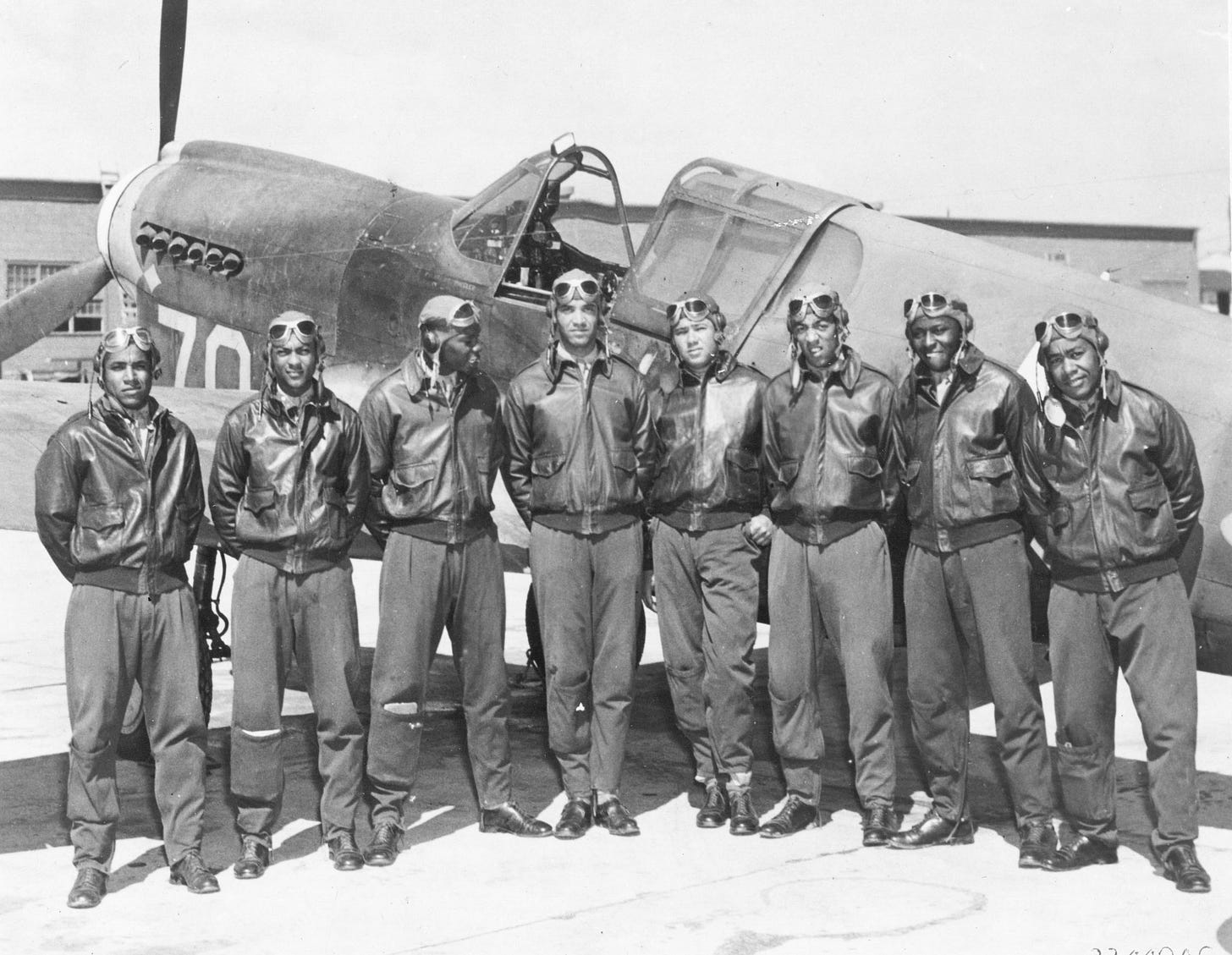TDIH: The Tuskegee Airmen's first aerial combat
A myth would soon grow up, claiming that the Airmen never lost a bomber. The myth wasn’t exactly true, but the Airmen had served so valiantly that it seemed true.
On this day in 1943, the Tuskegee Airmen of the 99th Fighter Squadron engage in aerial combat for the first time.
“The Tuskegee Airmen overcame segregation and prejudice to become one of the most highly respected fighter groups of World War II,” the Airmen’s website notes, “They proved conclusively that African Americans could fly and maintain sophisticated combat aircraft. . . . [Their achievements] paved the way for full integration of the U.S. military.”
The Tuskegee pilots were a part of President Franklin D. Roosevelt’s plan to prepare the military once World War II broke out in Europe. The United States Army Air Corps began a Civilian Pilot Training Program in 1939. By early 1941, the Air Corps had begun to train black pilots as well.
The military was unfortunately still segregated at that juncture, so these pilots would serve in their own units. The pilots known as the “Tuskegee Airmen” would include many pilots, maintenance, and support staff in multiple squadrons.
But its 99th Fighter Squadron was the first to serve in battle overseas.
Allied forces were then aiming to invade the Italian mainland, but they first needed to gain control of Sicily and other nearby islands. The 99th, led by Lt. Col. Benjamin O. Davis, Jr., would help.
They traveled to Europe aboard SS Mariposa, which carried roughly 4,000 troops. Davis would later write of this time, noting that most of the passengers were white, but that he and his men felt freed “at least for the moment, from the evils of racial discrimination. Perhaps in combat overseas, we would have more freedom and respect than we had experienced at home.”
They would soon get a chance to prove themselves.
On June 9, 1943, the 99th was escorting Allied bombers over Pantelleria, one of the islands near Sicily. Suddenly, enemy aircraft were spotted overhead.
“Instantly, without any hesitation, six P-40s wheeled around ‘on a dime’ in a gut-wrenching, 180-degree tight turn to confront the enemy,” Tuskegee Airman Charles Dryden later wrote, “the pilots flicking their gun switches and gun sights ON as they prepared for this first air battle with the enemy by any of the 99th pilots. Suddenly facing the thirty-six .50 caliber machine guns of our flight, the attacking planes scattered. So did we as we took off after them.”
It was the first time that the 99th had engaged in combat.
“Up until that very moment,” Dryden concluded, “I had harbored a fear deep within myself. . . . When I saw the swastikas on those ME-109s and felt the urge to ‘go get ‘em’ and a surge of adrenaline at the prospect of being the first N*gro to shoot down an enemy airplane in aerial combat, I knew that I had conquered my fear . . . .”
The Americans were facing off against a more experienced enemy, but they performed well and did not lose a bomber that day.
Better yet, the 99th contributed to the fall of Pantelleria on June 11. An Allied commander wrote Davis: “You have met the challenge of the enemy and have come out of your initial christening into battle stronger qualified than ever.”
Indeed, the Tuskegee Airmen would go on to distinguish themselves during the remainder of the war. A myth would soon grow up, claiming that the Airmen never lost a bomber. The myth wasn’t exactly true, but the Airmen had served so valiantly that it seemed true. And they helped pave the way for what followed.
On July 26, 1948, President Harry S. Truman issued an executive order declaring that “there shall be equality of treatment and opportunity for all persons in the armed services without regard to race, color, religion or national origin.” He was the first President to take such a stand.
The Tuskegee Airmen served our country at war, of course. But their valiant service enabled them to also serve our country at peace.
Sources can always be found on my website, here.





Wartime needs paved the way to racial integration for the men of the valiant Tuskegee Airmen. Their performance certainly proved that race makes no difference.
I served with men and women of all races during the Vietnam War and although I never have known any racial discrimination myself, I didn't see any blatant raism during my 4 years in the Navy.
Thank you Tara.
Based on what I've learned these men were fearless awe inspiring fighter pilots. I think I need to que up a book or two on them to my reading list.